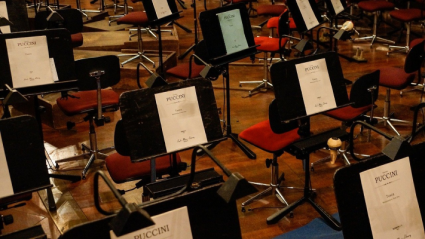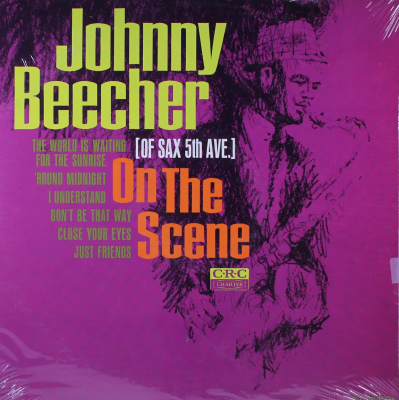.
.
Image by Taken from Pixabay

.
Ensemble Man
by Scott D. Vander Ploeg
.
…..“Ensemble”—I had heard the director use the term on many occasions, and thought it just meant some undefined collection of musicians. My Jr-high classmates were asked “to meet for ensemble,” or were told that “the ensemble session will be at 10:10 today.” In school, if you joined the band you just started playing; there was no course in Orientation to Band 101 to explain these concepts to us.
…..I stood at the back of the band, a percussionist. Most of the time we had the unique perspective of looking down at the seated players, watching as they tooted and blew and followed the director and alternated their gazes between him and the white music scores on black music stands. We usually did not have their challenge of varied notes. You stand at a snare drum and whack away at it and all of the notes are on the same line. Some of the guys did not even know the snare notes were on the C line. If there is an arrangement of a song that requires xylophone or tubular bells or marimba, we would look at each other in the percussion section with a who’s-drawn-the-short-straw kind of desperation. Drummers prefer drumming most of the time.
…..But there is a kind of elitism within the band, and the percussion section, though important for pacing the music and accenting when needed, were thought to be at the low end of the musical gene-pool. At the top were violins and other stringed instruments, and the woodwinds and horns would vie for second place. We never quite knew where to place the oboe in the hierarchy. If a piano was called for, we all bowed to it. We took pride in the percussion section to note that the piano is a percussive instrument, though the pianists we met never even acknowledged us.
…..This is not to say that the kids who played melody were unfriendly, but they did take a higher-than-thou attitude when it came to things like seat selection on the band bus, or who was more serious about who was the most expert musician. I took lessons and practiced the drum rudiments often. These were patterns of drum stick technique that we played over and over, not very different from the other players practicing their scales. For the drummers, it was a matter of speed, which was attained by muscular development and getting used to the stick bounce off of the drum head. The insides of our wrists tended to bulge from the constant exercise of our wrists. If this doesn’t seem as impressive as the virtuosity found in the other instruments, watch the 2002 movie Drumline sometime. Even the haughtiest of our high school expert musicians would have to admit being impressed at that fictitious drumming.
…..Mostly, the percussion section ticked on its rhythms, while the others swooped and soared around us, using our cadence and time signatures to create melody and confluence of sound. They would pause and hand off the melody, and frequently would go silent, counting out the measures before coming back in to the piece to receive the applause and admiration of the audience. They flashed their musical identities while we just plodded on, rarely stopping, giving the band the backbone for their exhibitionism. Nobody ever says: “What a great backbone you have.” The other instruments were the parts that got most of the attention.
…..One time though, I fell in love with my fellow band members, as a group. I mean I really experienced a welling up of heartfelt emotion, a compassion that came from the experience of ensemble. The director/teacher had chosen a piece titled “Dramatico,” and it featured the percussion section, giving us place of priority perhaps for the first time. We stepped up on this one, whamming out the snare, bass drum, and tom-tom work. Toward the end of the piece, one of us picked up a wooden hammer and wailed away at the tops of the tubular bells. There were maybe one or two items in our percussive arsenal that we did not employ for this piece, but I can’t recall equipment that did not get used, loudly.
…..What happened though was that I sensed how the other players were finessing their parts, how there was a kind of synergy that developed, where the whole of the music was greater than the sum of the individual parts. It seemed like a magical act in which each contributed his or her part, and the result was the growth of a sound structure that was majestic, sincere, excellent beyond expectation.
…..I became attuned to this shared mystery of music making. We attained this unity on many occasions. I also saw ensemble in other musical groups. I found it common among rock bands and harmonizing vocalists, and a particularly frequent aspect of contemporary jazz. When the Pat Metheny Group played their fusion jazz, they arranged their playing so that they could see each other, so that they could play to each other, and the audience was able to see them interacting, and hear their synergistic song.
…..This principle is not restricted to the entertainment of music. I found ensemble in unexpected places. If conditions were right—the students had rested and were awake and participating—group discussion in a class room might become an ensemble experience. You who are reading this are sharing in making a conversation of sorts, in which your readerly participation is contributing to building this essay, beyond the machine-gunned succession of these words. Your experiences and backgrounds are now creating awareness and insight beyond what the essay contains, as memories and recognitions are triggered by the writing.
…..What if we thought of our voting in elections as a kind of ensemble act, out of which our self-government emerges? In music composition there is such a thing as counterpoint. Perhaps that is the music we make in expressing our choices. We are ensemble in our nation.
.
.
___
.
.

Scott D. Vander Ploeg, Ph. D., is an early-retired professor of English/Humanities, named Kentucky college Teacher-Of-The-Year in 2009. He recorded essays for a regional NPR affiliate for a decade, and later wrote a column about the arts and letters for a small-town newspaper. He was the Executive Director of the Kentucky Philological Association. In his spare-time he is an amateur thespian, a jazz drummer, and a Sifu in Tai Chi.
.
.
Watch the New York Wind Symphony’s Play With the Pros program perform “Dramatico” by Robert W. Smith at the Sugar Loaf Performing Arts Center. Richard F. Regan, Conductor.
.
.
.
































